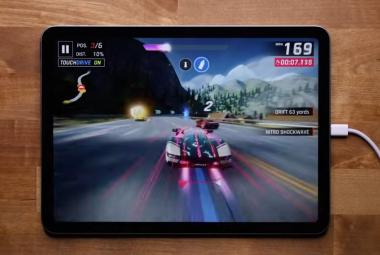Visual excerpt from the YouTube channel Miror Pro. All rights belong to the original creator.
In a bold and unexpected move, Samsung Electronics has accelerated its mission to redefine the smartphone landscape by filing an impressive 20 patents for innovative foldable phone designs. This wave of patent activity has sparked excitement and speculation across the tech industry, with enthusiasts already wondering if 2023 could signal the beginning of the end for traditional smartphones.
Samsung's filings reflect an ambitious vision for the future of mobile devices, underscoring the company’s commitment to breaking away from conventional design norms. These patents encompass a range of design innovations, including rollable, scrollable, and slidable displays—offering new levels of flexibility and adaptability. As a pioneer in foldable smartphones through its successful Galaxy Z Fold and Z Flip series, Samsung is no stranger to experimentation. However, this latest initiative marks a new chapter, signaling its intent to push foldable technology far beyond its current capabilities.
Among the standout concepts is a smartphone that can expand into a compact tablet. This design significantly diverges from Samsung’s existing Z Fold series by presenting a new approach to multifunctional devices. With a display that extends from one end, the device promises a full tablet experience while still fitting comfortably in a user’s pocket. It’s an ingenious concept, enabling a seamless transition between a standard smartphone and a mini-tablet—offering users the best of both worlds.
Adding to the intrigue is another design that features a rollable phone with a split back, connected by a flexible, rollable display. While durability questions naturally arise, Samsung’s willingness to explore unconventional formats highlights its dedication to pushing the boundaries of smartphone design. The rollable display concept is particularly appealing to tech enthusiasts who envision a future where rigid, static phone designs give way to adaptive, screen-centric devices tailored to different use cases.
Excitement surrounding Samsung’s developments has been further fueled by a collaboration between SamMobile and concept artist Jermaine Smith, renowned for his detailed renderings of futuristic tech. In their latest concept, Samsung’s rollable display phone features a wrap-around screen that curves from the front to the back of the device. A distinct bar on the right side houses the camera module, leaving the rest of the rear display uninterrupted. This design opens up new possibilities for multitasking and interaction, with users potentially accessing key functions directly from the back of the phone.
This horizontally expanding display concept recalls recent prototypes by TCL, but Samsung’s approach presents a more refined aesthetic and potentially superior functionality. While TCL has demonstrated similar ideas, Samsung’s strong market presence and reputation for innovation make its rollable designs especially noteworthy.
However, it’s important to remember that patents don’t always translate into immediate products. More often, they serve as early indicators of a company’s research and development focus. That said, the sheer volume of Samsung’s recent patent filings strongly suggests that these concepts are being seriously explored, potentially paving the way for a major product rollout in the near future. Some industry analysts even speculate that Samsung’s advancements could begin to eclipse traditional smartphones by the end of 2023, as consumers increasingly seek devices with greater versatility and enhanced portability.
The response from the tech community has been enthusiastic, with many users eagerly awaiting further announcements from Samsung. Given the growing interest in foldable technology, Samsung’s 2023 lineup could bring exciting advancements that reshape the smartphone market. These patents suggest that Samsung envisions a future where foldable and adaptable devices become the norm, offering users more flexible, screen-centric experiences than ever before. For those who have yet to embrace foldable phones, the next generation of designs may offer features compelling enough to persuade them to make the switch.
Samsung’s venture into advanced foldable technology reflects broader trends in the industry, with competitors like Huawei and Oppo also launching foldable models. However, with its new slate of patents, Samsung seems poised to maintain its leading position by delivering truly innovative designs that set it apart. These new concepts—whether rollable, scrollable, or slidable—showcase Samsung’s commitment to versatility, a quality that resonates with consumers seeking multifunctional devices capable of adapting to various tasks.
The foldable market remains a niche but rapidly expanding segment, with more consumers showing interest in devices that can seamlessly transition from smartphone to tablet. Analysts note that while foldables were once viewed as novelties, Samsung’s continued innovation has helped position them as viable alternatives to traditional smartphones. By broadening its design portfolio, Samsung aims to capture a larger share of this market—appealing not just to tech enthusiasts, but also to everyday users looking for practical solutions to screen size limitations.
Samsung’s focus on rollable displays, in particular, stands out. A rollable display allows a phone to maintain a compact form factor while expanding the screen size when needed. This is especially appealing in today’s mobile-first era, where users increasingly rely on their devices for video conferencing, gaming, and content creation. By enabling screens to extend on demand, Samsung’s rollable display concept addresses the balance many users seek between portability and productivity.
In the coming months, industry observers will be watching closely for official announcements from Samsung. If these patents translate into consumer-ready products, Samsung could drive a major shift toward foldable technology, pushing competitors to innovate in response. Such developments would likely usher in a new era of competitive innovation, ultimately benefiting consumers with a wider range of foldable options.
While the future of foldable phones is still unfolding, Samsung’s recent patent filings offer an exciting glimpse of what lies ahead. As anticipation builds, one thing is clear: Samsung’s relentless pursuit of innovation is transforming how we interact with mobile devices—bringing the once-futuristic concept of foldable phones closer to becoming a mainstream reality. In 2023, the future of mobile devices indeed looks foldable.



















